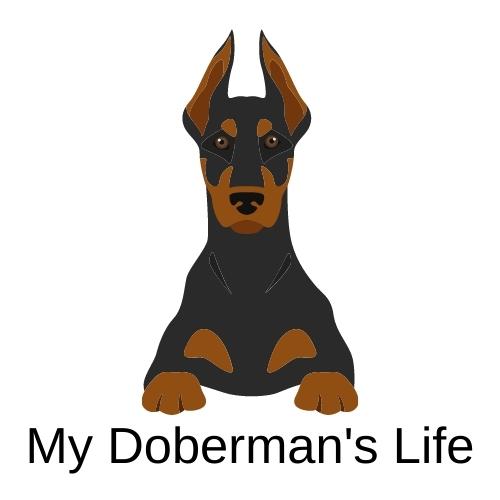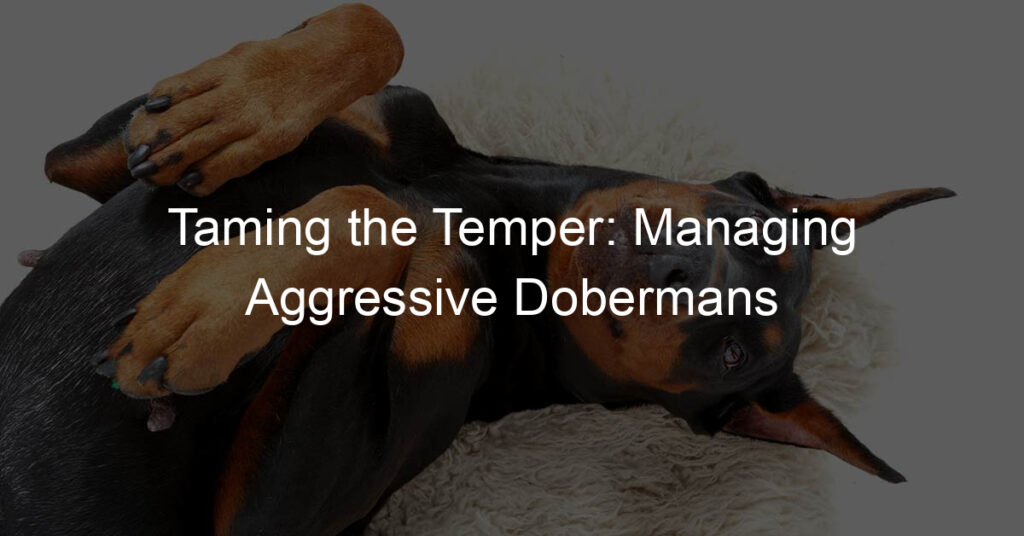
Introduction to Doberman Recall Training
Training your Doberman can be a rewarding experience for both you and your pet. One of the most important aspects of this training is recall, or teaching your dog to come when called. This skill is not only useful, but it can also be a lifesaver in potentially dangerous situations. In this section, we will explore the importance of recall training for dogs, and delve into the specific challenges and benefits of Doberman recall training.
- Understanding the Importance of Recall Training for Dogs
- Specific Challenges and Benefits of Doberman Recall Training
Recall training is a crucial part of any dog’s education. It’s the command that could potentially save your dog’s life one day. Imagine your dog is about to run onto a busy road; a well-trained recall could stop them in their tracks. It’s also handy in everyday situations, like when you need your dog to come back to you at the park or during a walk.
Recall training also strengthens the bond between you and your dog. It builds trust, as your dog learns to rely on your guidance and respond to your commands. This is particularly important for Dobermans, who are known for their loyalty and protective nature.
Training a Doberman can present its own unique challenges. Dobermans are intelligent and energetic dogs, which means they can easily get bored with repetitive tasks. They also have a strong prey drive, which can make them easily distracted by other animals or moving objects.
However, these challenges are outweighed by the benefits. A well-trained Doberman is a joy to be around. They are obedient, reliable, and can be trusted in a variety of situations. Plus, the process of training can help to build a strong bond between you and your Doberman, making you a more effective team.
Doberman Obedience Training Basics
Training a Doberman can be a rewarding experience. These intelligent and loyal dogs respond well to consistent, positive training methods. Let’s dive into the basics of Doberman obedience training.
Doberman Training 101
Before we start, it’s important to understand that every Doberman is unique. However, there are some general steps that can help you in your training journey.
- Understanding Doberman behavior and temperament
- Establishing trust and rapport with your Doberman
- Ensuring dog obedience: Basic commands and techniques
Dobermans are known for their intelligence, loyalty, and protective nature. They are energetic dogs that require mental and physical stimulation. Understanding their behavior and temperament is the first step in effective training. For instance, Dobermans are quick learners and respond well to positive reinforcement techniques.
Building a strong bond with your Doberman is crucial. Spend quality time with your dog, engage in play, and provide consistent care. This will help your Doberman trust you, making training sessions more effective. Remember, a dog that trusts its owner is more likely to follow commands.
Start with basic commands like ‘sit’, ‘stay’, and ‘come’. Use clear, consistent commands and reward your dog for following them. This could be a treat, praise, or a favorite toy. Repeat these exercises daily to reinforce the behavior. Remember, patience and consistency are key in dog training.
Training a Doberman is not just about teaching commands. It’s about building a strong, trusting relationship with your dog. With patience, consistency, and understanding, you can help your Doberman become a well-behaved, obedient companion.
Doberman Recall Commands
Training your Doberman to respond to recall commands is a crucial part of obedience training. It ensures your dog’s safety and fosters a strong bond between you and your pet. Let’s delve into the specifics of Doberman recall commands.
- Choosing the right recall command for your Doberman
- Training your Doberman to respond to the recall command
Choosing the right recall command is the first step in training your Doberman. The command should be short, distinct, and easy for your dog to understand. Commonly used recall commands include “Come,” “Here,” or even your dog’s name. It’s essential to use a command that your Doberman can easily associate with the action of coming to you.
Once you’ve chosen a recall command, the next step is training your Doberman to respond to it. Start in a quiet, distraction-free environment. Say the command in a clear, firm voice and reward your Doberman when they come to you. Gradually increase the distance between you and your dog, and introduce distractions as your Doberman gets better at responding to the command. Remember, consistency and patience are key in this process.
Training your Doberman to respond to recall commands is not just about obedience. It’s about ensuring their safety and strengthening your bond. With the right command and consistent training, your Doberman will soon be responding to your recall commands like a pro.
| Recall Command Tips | Description |
|---|---|
| Choose a distinct command | Pick a command that is short and easy for your dog to understand. |
| Start in a quiet environment | Begin training in an area free from distractions to help your dog focus. |
| Use rewards | Always reward your dog when they respond correctly to reinforce the behavior. |
| Be consistent | Use the same command and reward system consistently to avoid confusing your dog. |
Training Your Doberman to Come When Called
Training your Doberman to respond to your call is a crucial part of their obedience training. It ensures their safety and allows you to maintain control in various situations. Here, we will discuss three effective recall training methods.
Recall Training Methods
- Using Positive Reinforcement in Recall Training
- Practicing Recall in Different Environments
- Gradually Increasing Distractions During Recall Training
Positive reinforcement is a powerful tool in dog training. This method involves rewarding your Doberman for desired behavior, such as coming when called. You can use treats, toys, or praise as rewards. Remember, the key is to reward your Doberman immediately after they respond to your call, so they associate the reward with the action.
Practicing recall in various environments helps your Doberman adapt to different situations. Start in a quiet, distraction-free environment like your home. Once your Doberman consistently responds to your call, gradually introduce new environments like a park or a busy street. This practice will help your Doberman learn to respond to your call, no matter the surroundings.
Distractions are a part of life, and your Doberman needs to learn to respond to your call despite them. Start by introducing small distractions, like a toy or another person in the room. Gradually increase the level of distraction as your Doberman gets better at responding to your call. This could include introducing other dogs, more people, or louder noises. Remember, patience and consistency are key in this process.
In conclusion, training your Doberman to come when called is a gradual process that requires patience and consistency. Using positive reinforcement, practicing in different environments, and gradually increasing distractions are effective methods to achieve this. Remember, every Doberman is unique, so what works for one may not work for another. It’s all about finding what works best for you and your Doberman.
Doberman Training Techniques: Case Studies
Let’s delve into some real-life examples to better understand the effectiveness of recall training techniques for Dobermans. We’ll look at two different case studies, each highlighting a unique scenario and the strategies used to achieve successful recall training.
-
Case Study 1: Successful Recall Training with a Young Doberman
Meet Max, a lively and energetic young Doberman. Max’s owner started recall training when he was just a few months old. The training was initiated in a controlled environment, with minimal distractions. The primary method used was positive reinforcement. Every time Max responded to the recall command, he was rewarded with his favorite treat.
Over time, the training was moved to different environments with gradually increasing distractions. After a few weeks, Max was able to respond to the recall command even in a park full of other dogs and people. This case study clearly shows that starting recall training early and using positive reinforcement can yield successful results.
-
Case Study 2: Overcoming Recall Challenges with an Adult Doberman
Now, let’s talk about Bella, an adult Doberman who had never been trained to respond to recall commands. Bella’s owner faced several challenges initially. Unlike Max, Bella was set in her ways and found it difficult to focus during training sessions.
However, with patience and consistency, Bella’s owner was able to make progress. The training sessions were kept short, but regular, and positive reinforcement was used extensively. Bella’s favorite toy was used as a reward every time she responded correctly to the recall command. It took a few months, but Bella eventually learned to respond to the recall command, even in the presence of distractions.
This case study demonstrates that even with adult dogs, recall training can be successful with the right approach and a lot of patience.
These case studies highlight the importance of patience, consistency, and positive reinforcement in recall training for Dobermans. Whether you’re training a young pup like Max or an adult dog like Bella, these principles can guide you towards success.
Ensuring Long-Term Success in Doberman Recall Training
Training your Doberman to come when called is a crucial part of their overall behavior training. However, to ensure long-term success, you need to address common behavioral issues and use obedience training effectively. Let’s delve into these aspects.
Doberman Behavior Training
Understanding and addressing your Doberman’s behavior is the first step towards successful recall training. Here are two key areas to focus on:
- Addressing common behavioral issues that can hinder recall
- Using obedience training to improve overall behavior
Dobermans are known for their intelligence and energy. However, these traits can sometimes lead to stubbornness or distraction, which can hinder recall. For instance, if your Doberman is more interested in chasing a squirrel than coming when called, it’s a sign that you need to work on their focus and impulse control. You can do this by using positive reinforcement techniques, such as treats or praise, whenever they show good behavior.
Obedience training is not just about teaching your Doberman to follow commands. It’s also about improving their overall behavior and building a strong bond between you and your pet. Regular training sessions can help your Doberman understand what is expected of them and how to behave in different situations. This, in turn, can make recall training more effective.
In conclusion, addressing behavioral issues and incorporating obedience training are key to ensuring long-term success in Doberman recall training. Remember, patience and consistency are your best allies in this process.
Key Takeaways: Mastering Doberman Recall
Training your Doberman to come when called, or ‘recall,’ is a vital part of their obedience training. It can be a challenging task, but with patience, consistency, and understanding, you can achieve success. Here are some key takeaways to keep in mind:
- Importance of Consistency and Patience in Recall Training
- Benefits of Successful Recall Training for Doberman Owners
Consistency is key in recall training. It is important to use the same command and reward system each time. This helps your Doberman understand what is expected of them. Patience is also crucial. Remember, training doesn’t happen overnight. It may take weeks or even months for your Doberman to fully grasp recall. Don’t be discouraged if progress seems slow. Every dog learns at their own pace.
Successful recall training has numerous benefits. Firstly, it ensures the safety of your Doberman. A well-trained dog that comes when called is less likely to run into dangerous situations. Secondly, it strengthens the bond between you and your pet. Training sessions are a great opportunity for you to spend quality time with your Doberman. Lastly, it gives you peace of mind. Knowing that your dog will respond to your command, no matter the distractions, is a comforting thought.
In conclusion, mastering Doberman recall requires time, patience, and consistency. But the rewards are well worth the effort. A well-trained Doberman is a joy to own and a proud reflection of responsible pet ownership.








